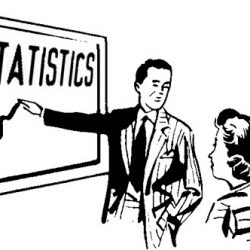
When taking a statistics class, the most important strategy is practice!
- Set aside one to two hours each day for six days out of the week for studying statistics.
- During your sessions try for 45 minute blocks and then take a break. Those of you with time constraints can find 45 minute blocks of time throughout the day if necessary. Do not cram your studying into four or five hours in one or two sittings each week.
- Work as many and varied problems and exercises as you possibly can. You cannot learn statistics by just reading about it. You must practice your skills repeatedly.
- Remember the bigger picture: each statistical test that you learn fits a particular type of experimental design by incorporating the number of samples you took, and variables you used. It accounts for the amount and type of replication of the study, and sources of error. Statistical tests are also used to determine different types of relationships and should be chosen based on what you are trying to gather data about.
For example, if you want to know whether or not mowing your lawn makes it grow faster, you would choose a test that compares a treatment to a control. If you are trying to determine how much fertilizer is optimal, you may compare different amounts to grass height or color.
Each of these experiments examines a different relationship and your statistical tests are designed to help you determine real effects of experimental treatment or environmental influence over random chance.
Learn more about the online degree programs and military friendly programs that Trident offers.
Dr. Tanya Murray is Trident's General Education Program Director and oversees all of the University's science courses.

